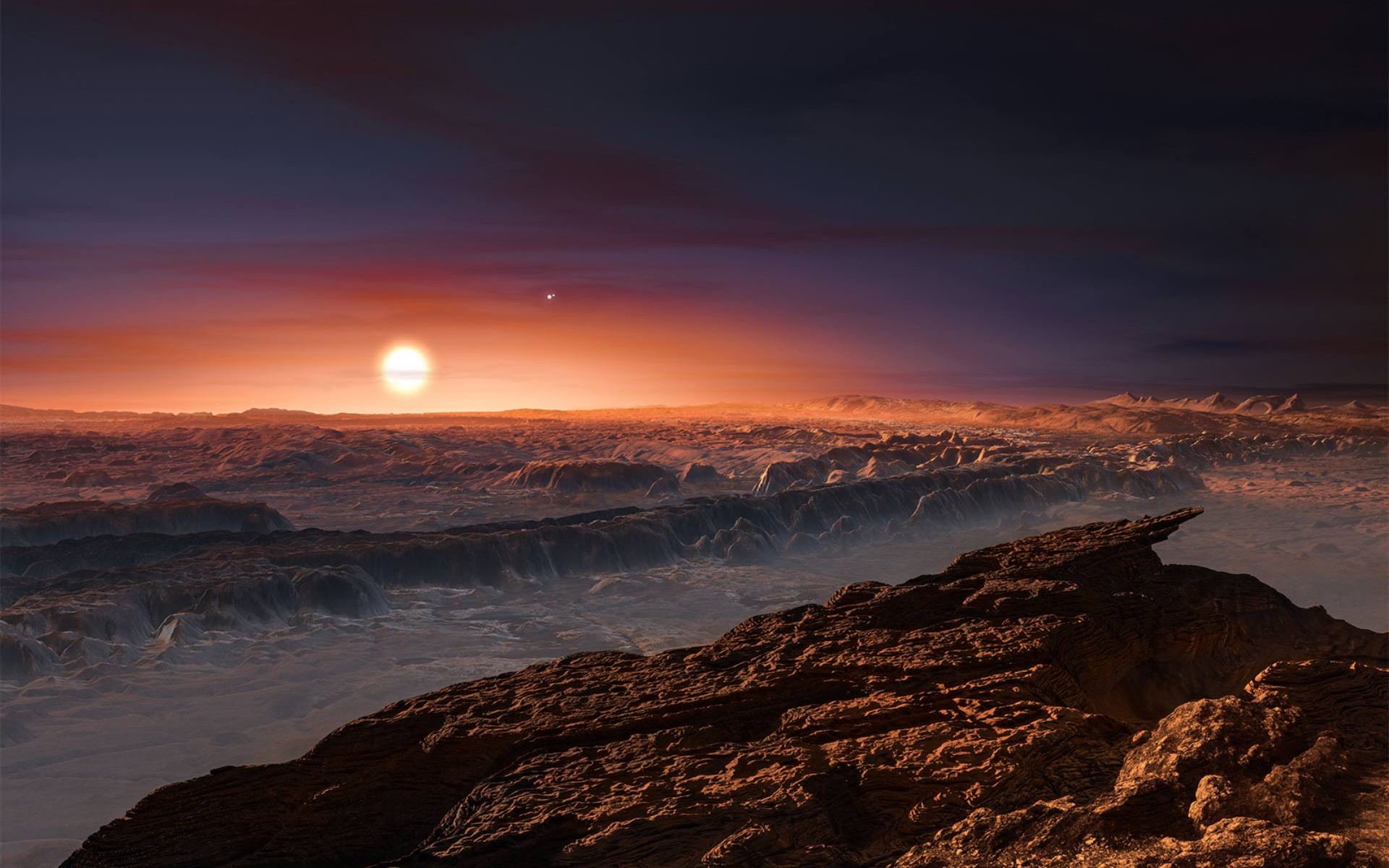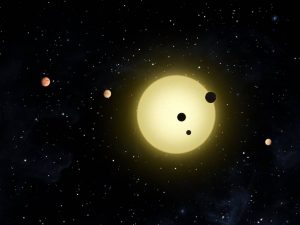More New Worlds
Exoplanets are planets in orbit round distant stars.
In recent blogs we’ve seen how exoplanets are discovered and looked at a few in detail.
It’s now time to look at more new worlds.
Some of my choices were inspired by young people who have visited Wonderdome.
My thanks to:
Liam & Ethan of Millgate School in Leicester,
Levi at Sutton School, Dudley
Lilly at Becton School in Sheffield.
J1407b: Super-Saturn
Liam and Ethan at Millgate School told me about this exoplanet.
Lilly at Becton School also knew about J1407b and other distant worlds.
It is a ‘Super-Saturn’ with a huge ring system.
.jpg)
Exoplanet J1407b. Artist impression: NASA / Ron Miller
The planet’s parent star is in the southern constellation of Centaurus.
It lies about 430 light years from Earth.
The planet was discovered by superWASP, the Wide Angle Search for Planets.
The planet was detected when it passed in front of the star – a transit.
Small dips in brightness during the transit indicate a ring system around the planet.
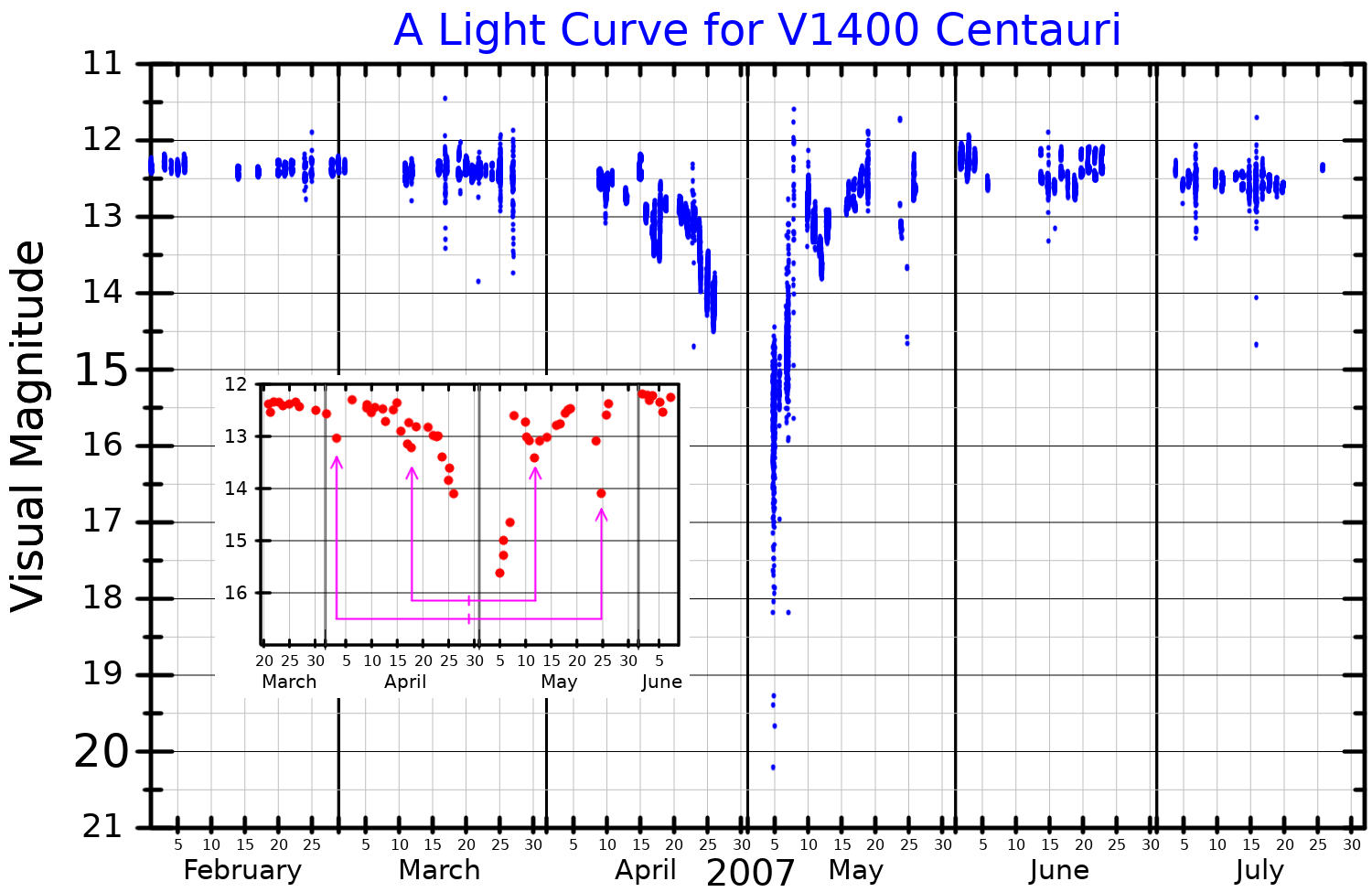
Light curve for J1407b Credit: WASP
The rings spread to 90 million km from the planet.
That’s much further than Venus is from our Sun and 640 times bigger than the rings of Saturn!
Proxima Centauri b
Levi at Sutton School explained that some planets always show the same side to their star.
They are tidally locked, in the same way that the Moon always shows the same hemisphere to Earth.
One such planet is Proxima Centauri b.
It orbits the closet star to our Sun, Proxima Centauri, just 4.2 light years away.
That alone makes it special – the closest planet to our own Solar System.
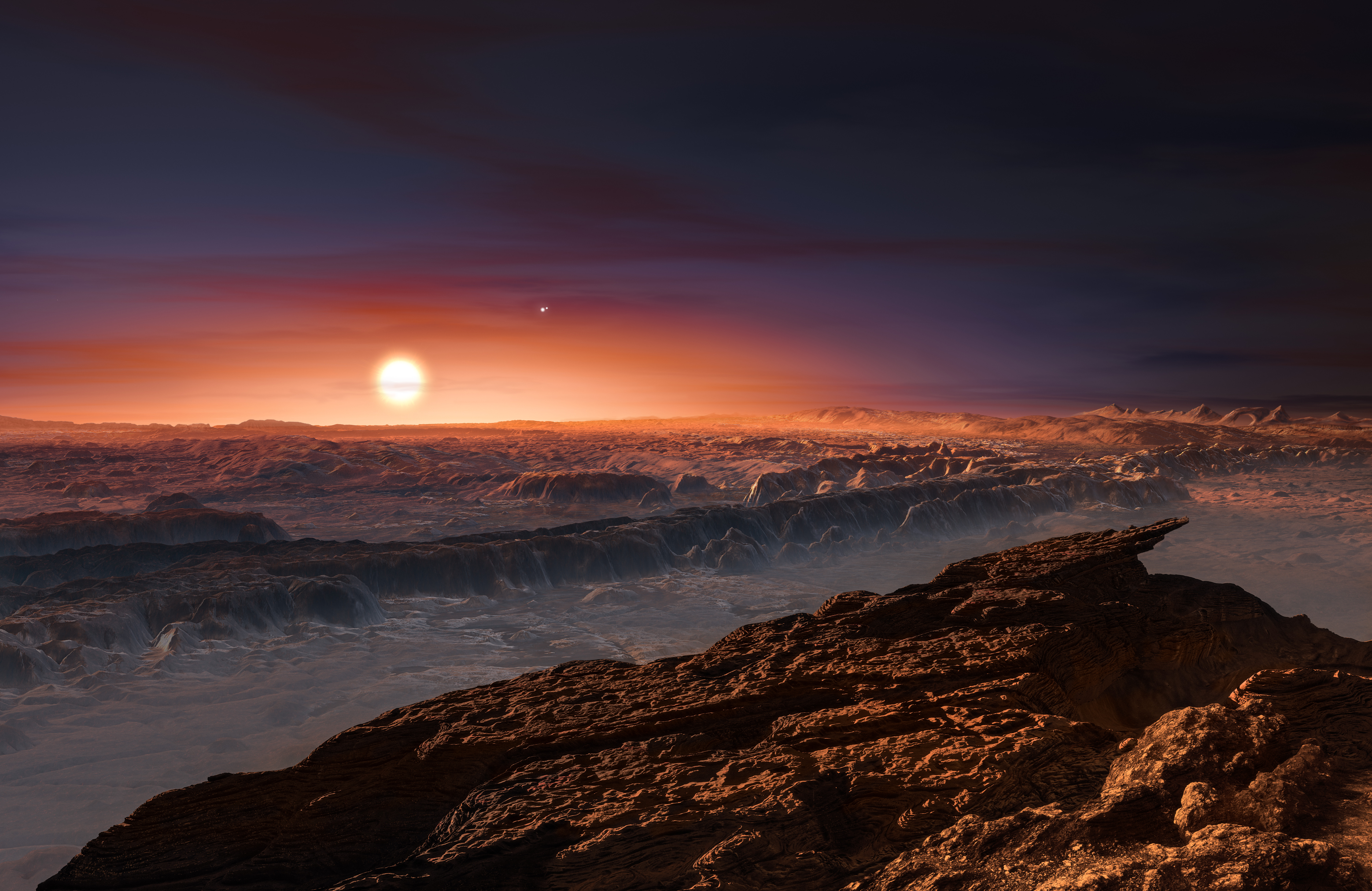
Proxima Centauri b, artist impression. Image: ESO / M Kornmesser
The planet orbits close to its star, at a distance of only 7.5 milliom km.
It takes only 11 days to orbit Proxima.
Proxima Centauri b is slightly larger than Earth.
Even though it orbits close to its star, the planet is in the habitable zone.
Proxima Centauri is a red dwarf star, much cooler than our Sun.
Whether the planet could sustain life is uncertain.
Like many more exoplanets, we need new telescopes to study it better.
Kepler-11
Kepler-11 is a star similar to the Sun, some 2000 light years away.
It has no less than 6 planets in orbit around it.
Kepler-11 system, artist impression. Credit: NASA / Tim Pyle.
The Kepler system is very compact.
All six planets orbit close to the star, with the furthest closer than Venus is to the Sun.

The planets range from Earth size to the size of Neptune.
As yet, we know little about these new worlds.
But Kepler-11 is the most compact planetary system discovered so far.
Mirror World
In 2020, the exoplanet finder TESS discovered a planet orbiting a star 260 light years away.
The star, code-named LTT9779, lies in the constellation Sculptor.
It’s a G-type star like our Sun.
Planet LTT9779b is larger than Earth, about the size of Neptune.
It orbits close to its star in only 19 hours.
The surface temperature exceeds 2000 degrees C.
At this close range, such a planet should not exist.
Its thick gas atmosphere should be blown away by the intense radiation of its parent star.
Astronomers refer to this zone as a ‘Neptune desert’.
Mirror world LTT9779b, artist impression. Image: NASA
So how does LTT9779b survive?
The clue came from ESA’s CHEOPS, the CHaracterising EXOplanets Satellite.
Following up on the TESS discovery, CHEOPS noted a large decrease in brightness when the planet went behind the star.
That means that the planet itself is very bright.
The high temperature vapourises silicates and metals like titanium.
These materials form an upper cloud layer.
Titanium makes the clouds very reflective.
They reflect about 80% of the star’s radiation.
Planet LTT9779b is a giant mirror, five times bigger than our Earth!
Because so much of the star’s heat is reflected, the outer gas layers of the planet remain cooled and intact.
The mirror clouds are the planet’s heat shield.
Marshmallow Planet
Another TESS discovery was planet TOI-3757b.
It orbits a star some 580 light years away in the constellation of Auriga.
That star is a dim red dwarf.
Red dwarfs are the most common type of star in our galaxy.
They are difficult to see because they are small and dim.
Planet TOI-3757b is a Jupiter-sized exoplanet, 150,000 km across.
It orbits close to its star in only 2.5 days – a ‘hot Jupiter’.
Astronomers at several observatories followed up the TESS discovery.
They included the WIYN telescope at KItt Peak in Arizona.
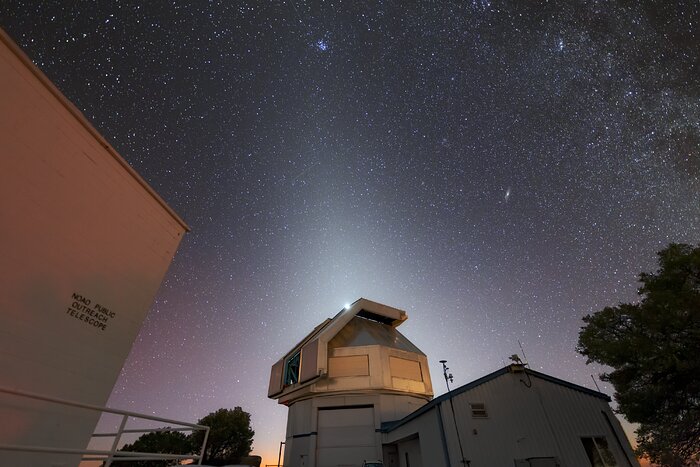
WIYN Observatory Credit: Kitt Peak National Observatory/NOIRLab/NSF/AURA/R. Spark
The astronomers established that TOI-3757b has a mass of only one-quarter that of Jupiter.
That works out at only 0.25 grams per cubic centimetre.
That’s one-quarter the density of water.
If you had a bath tub big enough, this exoplanet would float on water!
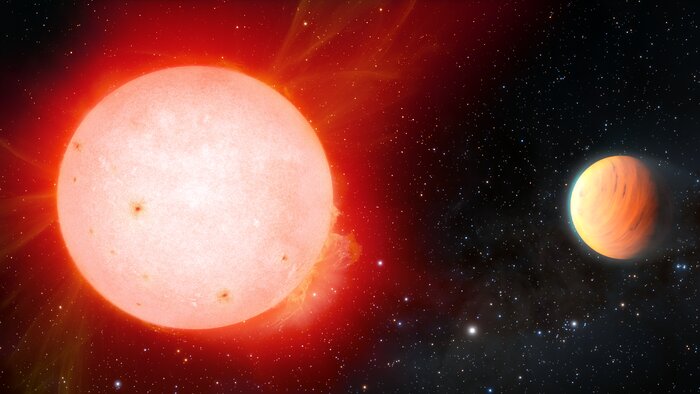
Star TOI-3757 and its exoplanet. Credit: NOIRLab/NSF/AURA/J. da Silva/Spaceengine/M. Zamani
TOI-3757b has the density of a marshmallow.
It is the fluffiest planet known.
TOi-3757b is the ‘Marshmallow Planet’.
Dark night, glow light.
Look again at the photo of the WIYN Observatory.

The observatory is one of many on the mountain of Kitt Peak in Arizona
The sky there is dark and crystal clear.
But the photo shows a bright light behind the observatory building.
It looks like moonlight or the glow of a nearby city.
It’s neither. It is the Zodiacal Light.
Here sunlight is scattered by dust between the planets of our Solar System.
Zodiacal Light comes before dawn in a dark sky.
Kitt Peak is one of the great dark sky places on our planet.
The wonder of Wonderdome
Liam and Ethan at Millgate School, Levi at Sutton School and Lilli at Becton School inspired my choice of exoplanets.
In the Wonderdome shows they demonstrated their knowledge and interest.
Their level of knowledge surprised both their teachers and me as presenter.
Our planetarium is a wonderful environment and stimulates this kind of rewarding discussion.
If you are a teacher, do consider a Wonderdome visit.
Your students may surprise you!
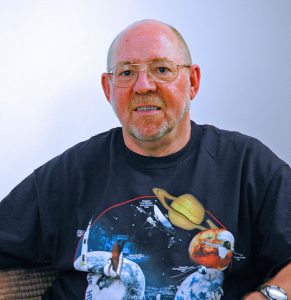
The author: Dennis Ashton is a Fellow of the Royal Astronomical Society and a Wonderdome presenter.
Would you like to hear more Astronomy news?
Do you want to to find out about our upcoming public events?
Follow WonderDome Portable Planetarium on Twitter and Facebook or go to our web site wonderdome.co.uk

